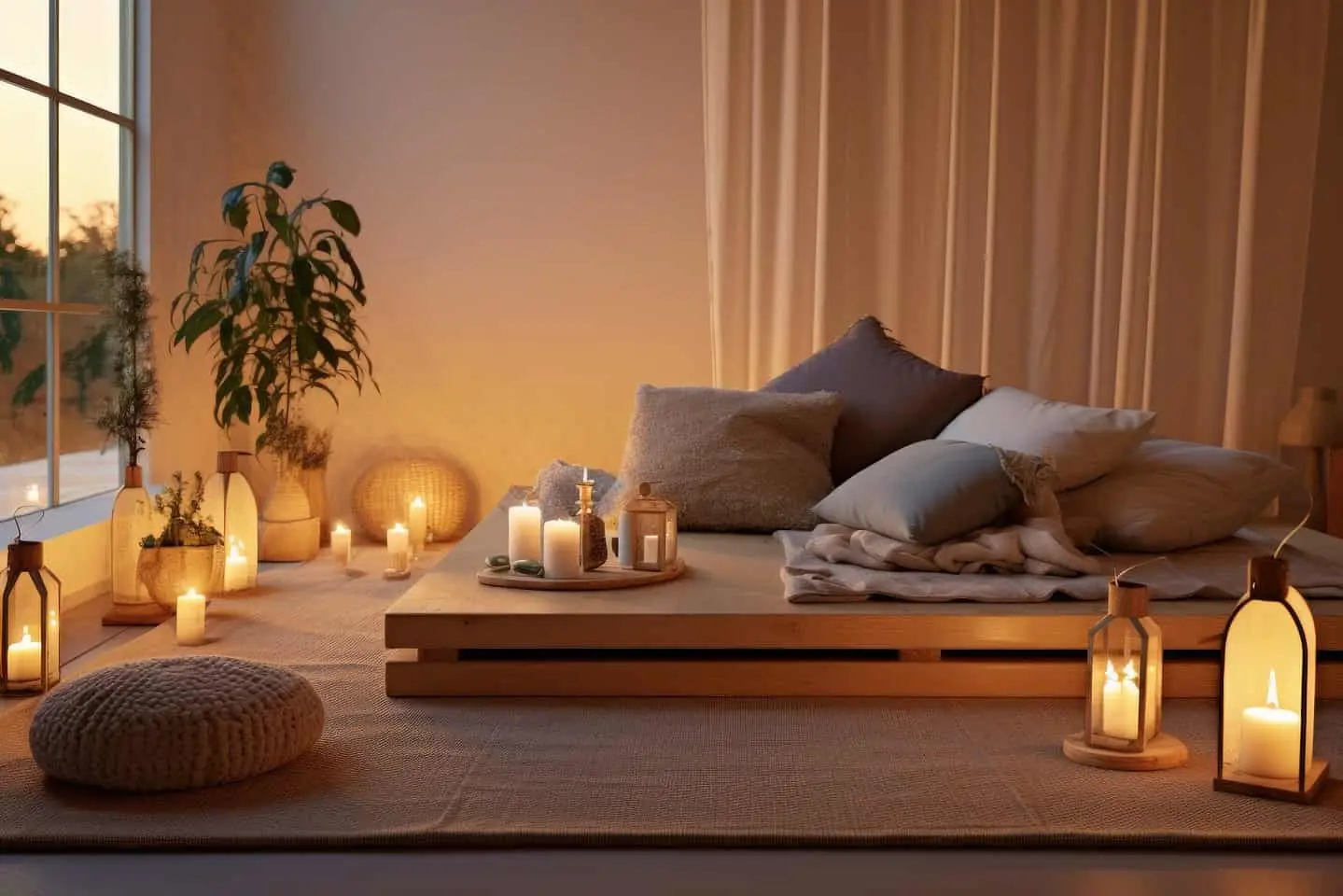Table of Content
Creating a meditation space at home can greatly enhance your daily practice, giving you a dedicated spot to relax, reflect, and recharge. As mindfulness and wellness culture grow in popularity, more people are looking for ways to integrate meditation into their routines. Here’s a detailed guide on setting up an effective meditation space at home, complete with research and statistics to help you maximize your mindfulness practice.
Importance of a dedicated meditation space at home
Research shows that having a designated meditation area can improve the consistency and quality of your practice. A study by the American Psychological Association found that a routine can enhance relaxation and reduce stress, suggesting that a dedicated meditation space can help your mind relax more quickly. This is important, given that the American Institute of Stress reported in 2020 that about 33% of people experience extreme stress levels, making meditation a valuable tool.
Also Read: 10 most common electrical problems in your house and how to fix them
Choosing the right location
The space does not need to be large; even a small corner of a room can suffice. The key is to find a quiet area where interruptions are minimal. According to a 2018 survey by the National Center for Complementary and Integrative Health, quiet environments can significantly improve the effectiveness of meditation practices by reducing potential distractions that can interfere with mindfulness.
Comfort is key
Comfortable seating is crucial. Whether you choose a cushion, chair or mat, ensure it supports your posture. A 2019 study published in the Journal of Physical Therapy Science emphasised that proper seating during meditation can reduce physical discomfort and enhance concentration.
Set the atmosphere
Lighting and ambiance are crucial. Soft, natural lighting is best, as harsh lighting can strain your eyes and disrupt relaxation. Add elements like plants, which a NASA study found can improve air quality and create a calming atmosphere. Consider using calming scents like lavender or sandalwood, which studies from Mie University School of Medicine have shown to reduce stress and anxiety.
Also Read: How to resolve water leakage from roof?
Minimise distractions
Make sure your meditation space is free from everyday distractions. This means staying away from electronic devices and noisy areas in your home. A 2019 study from the University of Sussex found that digital devices can significantly disrupt relaxation. Therefore, it's important to create a tech-free zone or use devices only for meditation, like timed sessions or guided practices.
Personalise your space
Personalizing your meditation area can make your practice more inviting and meaningful. Add items like inspirational quotes, personal mementos, or colors that evoke calmness to enhance the space. A 2020 study in The Journal of Environmental Psychology found that personalized spaces can boost satisfaction and emotional connection to practices like meditation.
Maintain the space
Keeping your meditation area clean and organized is essential. Clutter can be mentally distracting and hinder your ability to focus and relax. A 2019 report by the Princeton University Neuroscience Institute found that physical clutter competes for your attention, reducing performance and increasing stress.
Also Read: How to effectively remove oil and grease from kitchen walls?











Ans 1. Plenty of sunlight: Natural light helps you relax. Natural elements: Take design inspiration from the outdoors. Neutral colors: Keep a muted color palette. Zen decor: Incense or scented candles, tranquil instrumental music, a rug and meditation cushion.
Ans 2. Instead, pick somewhere you're less likely to be disturbed (even a locked bathroom could work). Consider the timing of your meditation practice. If your home is quieter at certain times of day, your favorite nook could work by simply shifting the time of your practice.
Ans 3. Facing East - The Preferred Choice The natural energy emanating from the east is believed to enhance mental clarity, focus, and introspection, making it an ideal direction for meditation practices.
Ans 4. Meditating from any comfortable place, including your bed, can make you feel a lot more relaxed and allow you to have those precious moments of peace and quiet. If you're looking for ways to meditate before sleep, read on for instructions on how to meditate in bed while reaping the many benefits of this practice.
Ans 5. Establish a focal point that has significance, such as an altar or artwork. Add soft furnishings, such as throw blankets, pillows or cushions. Incorporate natural elements, such as hard-to-kill houseplants or stones. Personalize the space with inspirational phrases, crystals, scented candles or essential oils.